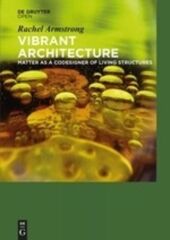 Neuerscheinungen 2015Stand: 2020-02-01 |
Schnellsuche
ISBN/Stichwort/Autor
|
Herderstraße 10
10625 Berlin
Tel.: 030 315 714 16
Fax 030 315 714 14
info@buchspektrum.de |

Rachel Armstrong
Vibrant Architecture
Matter as a CoDesigner of Living Structures
2015. 370 S. 187 col. ill., 21 col. tbl. 240 mm
Verlag/Jahr: DE GRUYTER 2015
ISBN: 3-11-040372-2 (3110403722)
Neue ISBN: 978-3-11-040372-5 (9783110403725)
Preis und Lieferzeit: Bitte klicken
This book sets out the conditions under which the need for a new approach to the production of architecture in the twenty-first century is established, where our homes and cities are facing increasing pressures from environmental challenges that are compromising our lives and well being. Vibrant architecture embodies a new kind of architectural design practice that explores how lively materials, or ´vibrant matter´, may be incorporated into our buildings to confer on them some of the properties of living things, such as movement, growth, sensitivity and self-repair. The theoretical and practical implications of how this may occur are explored through the application of a new group of materials. Characteristically, these substances possess some of the properties of living systems but may not have the full status of being truly alive. They include forms of chemical artificial life such as ´dynamic droplets´ or synthetically produced soils. As complex systems, they are able to communicate directly with the natural world using a shared language of chemistry and so, negotiate their continued survival in a restless world. Vibrant architecture may create new opportunities for architectural design practice that venture beyond top-down form-finding programs, by enabling architects to co-design in partnership with human and nonhuman collectives, which result from the production of post natural landscapes. Ultimately, vibrant architecture may operate as an ecological platform for human development that augments the liveliness of our planet, rather than diminishes it.
Rachel Armstrong, Newcastle University, UK


